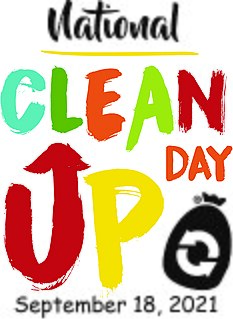 W
WEnvironmental volunteers conduct a range of activities including environmental monitoring ; ecological restoration such as revegetation and weed removal, and educating others about the natural environment. They also participate in community based projects, improving footpaths, open spaces, and local amenities for the benefit of the local community and visitors. The uptake of environmental volunteering stems in part from the benefits for the volunteers themselves, such as improving social networks and developing a sense of place.
 W
WClean Up Australia Limited is a not-for-profit Australian environmental conservation organisation.
 W
WA clean-up is a form of environmental volunteering where a group of people get together to pick-up and dispose of litter in a designated location. Clean-ups can take place on a street, in a neighborhood, at a park, on a water stream, or other public spaces. Clean-up events are often volunteer run. The clean-up volunteers make sure the waste picked-up is disposed of in its' appropriate place. Clean-up events are often community-centered and led.
 W
WThe Great Cocky Count, also known as the Great Cockatoo Count, is an annual census designed to provide accurate data about the number and distribution of black cockatoos. It is the largest single survey of black cockatoos in Western Australia.
 W
WLet's Clean Slovenia 2012 was a Slovenian environmental volunteer project organized by the environmental organization Ecologists Without Borders with the goal of joining 250,000 people on 24 March 2012 and cleaning municipal waste from illegal landfills in the country. Cleaning of scattered garbage in urban areas was also organized. The project, a continuation of the Let's Clean Slovenia in One Day! carried out two years before, was inspired by the Estonian campaign Let's Do It 2008 and organized within the frame of the World Cleanup 2012.
 W
WNational CleanUp Day is held annually in the United States and globally on the third Saturday of September. In the United States, there are cleanups held in every State and Territory. It promotes country-scale organized and individual cleanup events and volunteering to keep the outdoors clean and prevent plastic from entering the ocean.
 W
WPlogging is a combination of jogging with picking up litter. It started as an organized activity in Sweden around 2016 and spread to other countries in 2018, following increased concern about plastic pollution. As a workout, it provides variation in body movements by adding bending, squatting and stretching to the main action of running, hiking, or walking. An estimated 2,000,000 people Plog daily in 100 countries and some plogging events have attracted over 3,000,000 participants.
 W
WEdward A. Richardson was a self-taught tree expert who spent years studying the trees of Connecticut. Richardson, a World War II veteran who made his living in Connecticut's insurance industry, volunteered numerous hours of his time to find, measure and catalog large and interesting trees for the Notable Tree Survey of the Connecticut Botanical Society, which resulted in the publication of Glenn Dreyer's book, "Connecticut's Notable Trees," in 1989. Richardson mapped out the trees in Hartford's Bushnell Park, Institute of Living, Elizabeth Park and Cedar Hill Cemetery. Over the years, Richardson also led numerous tree tours throughout the state of Connecticut.
 W
WTrashTag is an internet challenge and hashtag campaign where people clean up a heavily littered area, posting before and after photos with the hashtag #trashtag